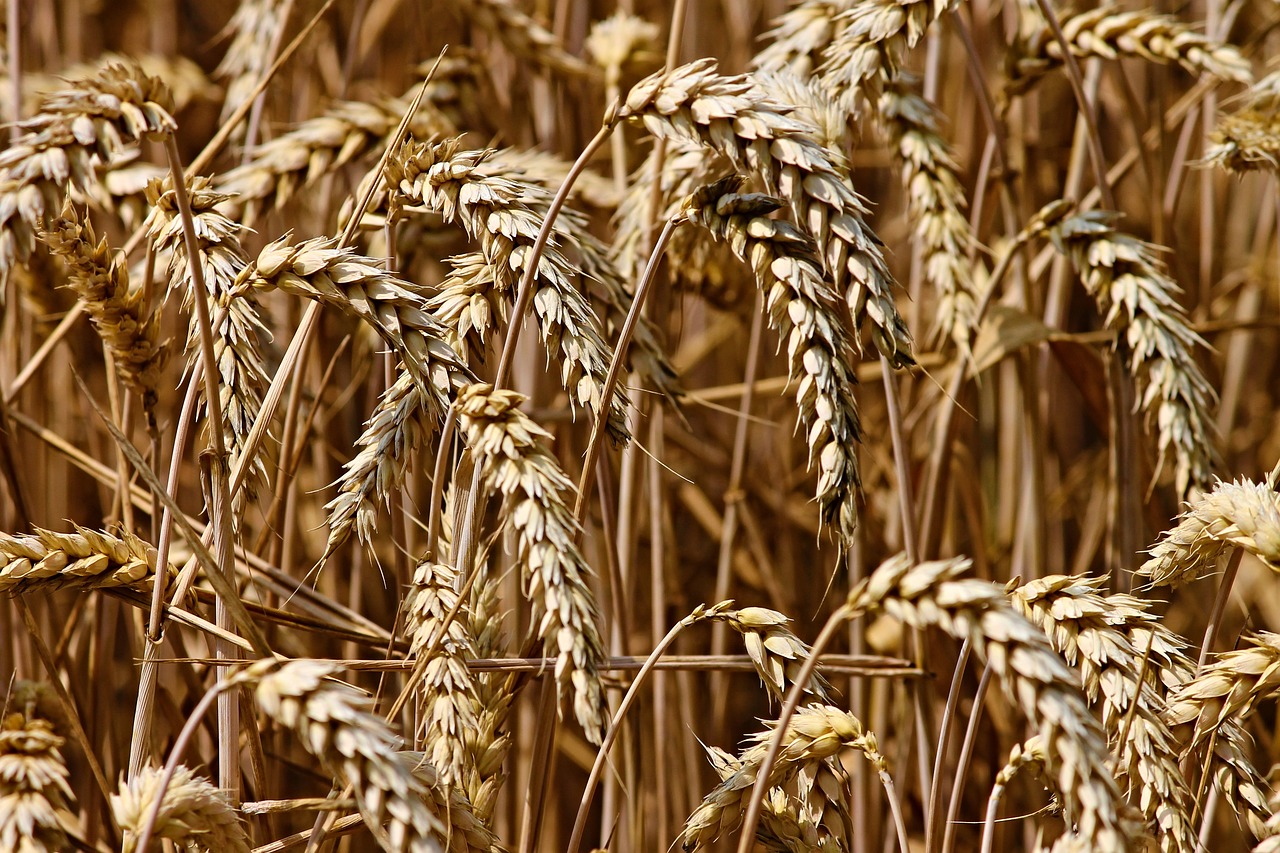
Pre-reading questions:
I will read each question. Then, please answer them.
- What are some of the challenges you think agriculture faces today?
- What do you understand by the term “gene editing”?
Vocabulary:
I will read the words, meanings, and sample sentences. Then, repeat after me.
- wheat /weet/
- unlike /uhn-LAHYK/
- variation /vair-ee-EY-shuhn/
- harvest /HAHR-vist/
- shortage /SHAWR-tij/
[noun] – a plant whose yellowish-brown grain is used for making flour, or the grain itself
Wheat is a staple food in many countries, often ground into flour for bread.
[preposition] – different from; not similar to
Unlike her siblings, Sarah prefers quiet evenings at home over crowded parties.
[noun] – different forms or versions of something
The garden displayed a stunning variation of roses, showcasing different colors and petal shapes.
[noun] – the process or period of gathering in crops
The farmers celebrated a bountiful harvest after a season of hard work.
[noun] – a situation in which there is not enough of something
The drought caused a water shortage in the region, impacting agriculture and daily life.
Article reading:
Please read the whole article. Then, I will check your pronunciation and intonation.
Australia is pioneering a major trial of gene-edited wheat, aiming to make it produce more food. This new wheat is grown using a high-tech method called gene editing, which changes the plant’s genes without adding foreign DNA, unlike genetically modified organisms (GMOs). Supporters say this technology can make crops healthier and stronger, needing less water and chemicals. Gene editing is seen as safer than GMOs by many experts and allows multiple gene changes at once.
InterGrain, an Australian company, is testing thousands of wheat seeds from a U.S. firm called Inari to see if they can improve crop yield. These seeds, with many new genetic variations, are growing in a greenhouse in southeast Queensland. If successful, more trials will happen across Australia in 2025 to find the best gene combinations for bigger harvests. The leader of InterGrain says this work is not just about making more wheat but also about solving big global problems like food shortages and climate change. Advanced tools like artificial intelligence and CRISPR-Cas are being used to speed up progress, which could change the way food is grown. This initiative is significant because it could lead to wheat plants that produce up to 10% more food and are more resistant to diseases. It could also mean farmers need to use fewer chemicals, which is better for the environment. Experts believe this technology could revolutionize farming and help address challenges like feeding a growing population and protecting the planet.
InterGrain, an Australian company, is testing thousands of wheat seeds from a U.S. firm called Inari to see if they can improve crop yield. These seeds, with many new genetic variations, are growing in a greenhouse in southeast Queensland. If successful, more trials will happen across Australia in 2025 to find the best gene combinations for bigger harvests. The leader of InterGrain says this work is not just about making more wheat but also about solving big global problems like food shortages and climate change. Advanced tools like artificial intelligence and CRISPR-Cas are being used to speed up progress, which could change the way food is grown. This initiative is significant because it could lead to wheat plants that produce up to 10% more food and are more resistant to diseases. It could also mean farmers need to use fewer chemicals, which is better for the environment. Experts believe this technology could revolutionize farming and help address challenges like feeding a growing population and protecting the planet.
Comprehension questions
I will read each question. Then, please answer them based on the article.
- What is the main goal of the gene-edited wheat trial in Australia?
- How does gene editing differ from genetically modified organisms (GMOs) according to the article?
- What benefits do supporters claim gene-edited crops have over traditional crops?
- Why is gene editing considered safer than GMO techniques by many experts?
- What will happen if the initial trials of gene-edited wheat in Queensland are successful?
Discussion questions
I will read each question. Then, please answer them.
- Have you considered how technologies like gene editing can help tackle global issues such as food shortages and climate change? If yes, which aspects of these technologies do you find interesting or concerning? If not, do you think learning about these new farming methods could improve your understanding of future food production? In what ways?
- Have you ever come across foods on the market that were labeled as genetically edited or modified? If so, how did you feel about purchasing or consuming them? If not, would you be willing to try such foods in the future? Why or why not?
- Do you agree that gene editing could offer a safer and more sustainable alternative to traditional breeding methods?
- Do you think there should be rules for using gene editing in farming worldwide? Why or why not?
- How do you think the acceptance of gene-edited crops by different countries and regions might impact global trade and food security?